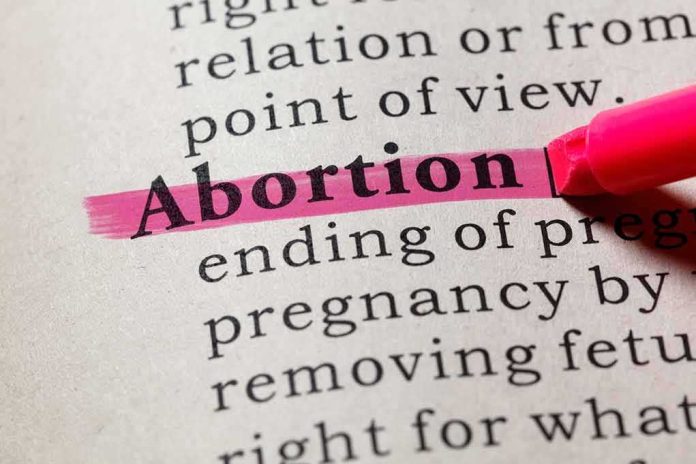
Supreme Court delivers crushing blow to Planned Parenthood as Justices rule 6-3 that states can cut Medicaid funding to the abortion provider, potentially impacting nearly 200 health centers across 24 states.
Key Takeaways
- The Supreme Court ruled 6-3 that South Carolina can exclude Planned Parenthood from its Medicaid program, allowing states to control healthcare funding allocation.
- Justice Neil Gorsuch’s majority opinion determined Medicaid patients cannot sue states to enforce provider choice, overturning lower court rulings.
- The decision could impact up to 200 Planned Parenthood centers across 24 states that rely on Medicaid funding for non-abortion services.
- Conservative states now have clear authority to redirect taxpayer dollars away from organizations associated with abortion services.
- South Carolina Governor Henry McMaster’s 2018 executive order blocking Medicaid payments to abortion providers will now take effect.
Supreme Court Upholds States’ Rights to Direct Medicaid Funding
In a decisive victory for state sovereignty, the Supreme Court ruled 6-3 that South Carolina can exclude Planned Parenthood from its Medicaid program. The ruling, led by Justice Neil Gorsuch and supported by the conservative majority, determined that federal Medicaid law does not grant enrollees the right to sue states over provider choice violations. This decision reverses lower court rulings that had previously blocked South Carolina Governor Henry McMaster’s 2018 executive order prohibiting Medicaid reimbursements to abortion providers, regardless of whether the specific reimbursements were for non-abortion services.
Justice Gorsuch’s majority opinion clarified the limitations of spending-power statutes like Medicaid. “Congress knows how to give a grantee clear and unambiguous notice that, if it accepts federal funds, it may face private suits asserting an individual right to choose a medical provider,” Gorsuch wrote, adding that “that is not the law we have.” This interpretation empowers states to make independent decisions about which healthcare providers receive taxpayer funding, protecting states’ autonomy in administering Medicaid programs according to local values.
The US Supreme Court has already started issuing decisions.
Wondering what's at stake for our rights and values this term? Scroll through our explainer to see how #SCOTUS cases will impact our fundamental freedoms. And learn even more at https://t.co/7udR0nPLOV #CourtsMatter pic.twitter.com/rqfQzdx65Q
— National Council of Jewish Women (@NCJW) June 11, 2025
Victory for Taxpayer Protection and States’ Authority
The ruling represents a significant win for President Trump’s judicial appointments and conservative principles regarding taxpayer funding. Governor McMaster celebrated the decision, stating: “Seven years ago, we took a stand to protect the sanctity of life and defend South Carolina’s authority and values – and today, we are finally victorious.” His stance aligns with many taxpayers who have objected to public funds supporting organizations that provide abortion services, even when those funds are designated for other purposes.
“Taxpayers should not be forced to subsidize abortion providers who are in direct opposition to their beliefs,” said Gov. Henry McMaster, Governor of South Carolina.
The Supreme Court’s decision recognizes that states should have control over how Medicaid funds are distributed within their borders. This ruling aligns with the conservative principle that healthcare funding decisions should reflect local community values rather than federal mandates. With approximately 80 million Americans receiving healthcare through Medicaid, this decision reaffirms that state governments are best positioned to determine which providers meet their standards for receiving public funding.
Implications for Planned Parenthood’s Funding Model
Planned Parenthood faces significant financial challenges following this ruling, as one-third of its revenue comes from government funding, including Medicaid. The organization claims the decision could potentially lead to the closure of nearly 200 health centers across 24 states if other states follow South Carolina’s example. Nearly half of Planned Parenthood’s patients nationwide receive care through Medicaid, making this ruling particularly impactful for their business model and service delivery capability.
“Payment of taxpayer funds to abortion clinics, for any purpose, results in the subsidy of abortion and the denial of the right to life,” said Henry McMaster, Governor of South Carolina.
The dissenters, led by Justice Ketanji Brown Jackson, argued that the ruling would “result in tangible harm to real people” by limiting healthcare options. However, this perspective fails to acknowledge that states maintain the authority to ensure adequate healthcare coverage through other providers not associated with controversial services. The decision simply confirms that states can direct taxpayer resources to healthcare providers aligned with their citizens’ values while ensuring services remain available through alternative providers.
Broader Implications for Medicaid Administration
This Supreme Court decision extends beyond the abortion debate, potentially affecting how Medicaid is administered nationwide. By clarifying that individual Medicaid recipients cannot sue states over provider selection, the Court has established a precedent that strengthens state authority in healthcare funding decisions. This ruling supports President Trump’s consistent emphasis on returning power to states and reducing federal overreach in healthcare administration, allowing for more localized control over public health programs.
“Though it is rare enough for any statute to confer an enforceable right, spending-power statutes like Medicaid are especially unlikely to do so,” said Justice Neil Gorsuch, Supreme Court Justice.
The decision aligns with a broader conservative effort to reform healthcare funding. A House Republican spending bill currently aims to bar Medicaid from funding Planned Parenthood nationwide, though its future in the Senate remains uncertain. The Supreme Court’s ruling provides legal backing for such legislative efforts, reinforcing the principle that taxpayer dollars should be directed according to the values and priorities of the citizens in each state rather than through federal mandates that override local governance.



